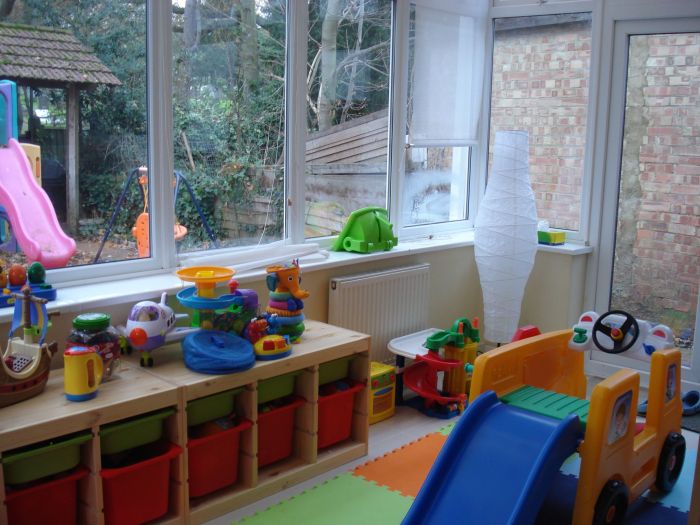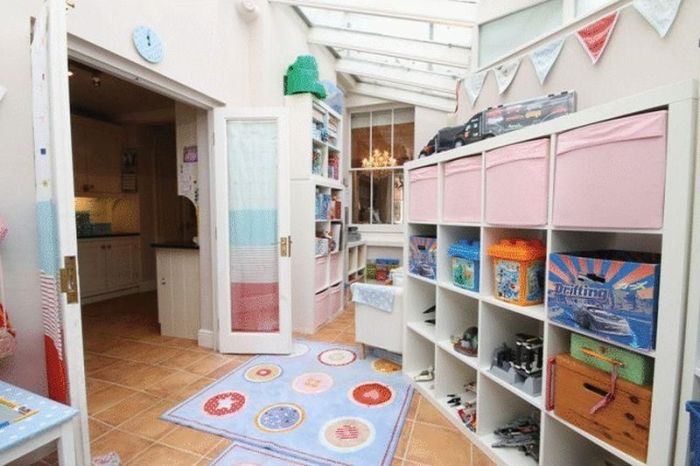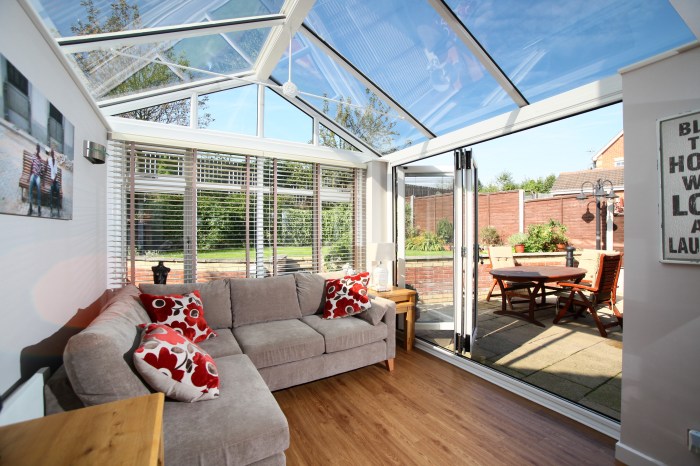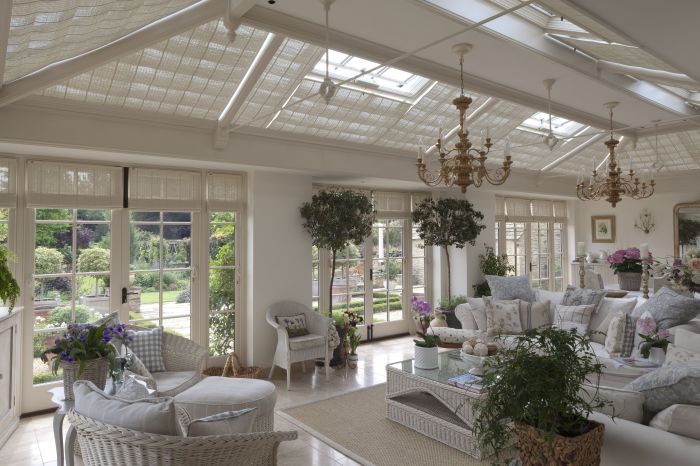Step into a world of imaginative play and endless possibilities with conservatory playroom ideas. Transform your conservatory into a whimsical paradise where children can explore, learn, and create. Let’s embark on a journey to design a space that sparks joy, encourages creativity, and fosters a love for play.
From choosing the perfect colors and furniture to incorporating natural elements and educational touches, this guide will inspire you to create a playroom that’s both functional and aesthetically pleasing. Get ready to turn your conservatory into a magical kingdom where laughter, learning, and imagination soar.
Design Concepts
Creating a conservatory playroom that is both functional and aesthetically pleasing requires careful planning and attention to detail. The right colors, furniture, and accessories can make all the difference in creating a space that is both inviting and stimulating for children.
When choosing colors for a conservatory playroom, it is important to consider the amount of natural light that the space receives. Light colors, such as white, cream, or pale blue, will help to reflect light and make the room feel more spacious.
Darker colors, such as navy blue or green, can create a more intimate and cozy atmosphere. If the conservatory receives a lot of natural light, you can afford to use darker colors without making the space feel too small.
When choosing furniture for a conservatory playroom, it is important to select pieces that are both durable and comfortable. Sofas and chairs should be made from easy-to-clean materials, such as leather or vinyl. Tables and desks should be sturdy enough to withstand rough play.
It is also important to choose furniture that is appropriately sized for the space. Overcrowding the room will make it feel smaller and less inviting.
Accessories can add a touch of personality to a conservatory playroom. Rugs, curtains, and artwork can all be used to create a specific theme or atmosphere. Plants are also a great way to add a touch of nature to the space.
When choosing accessories, it is important to keep safety in mind. Avoid sharp objects or anything that could be easily broken.
Incorporating natural elements into the design of a conservatory playroom can help to create a more calming and relaxing space. Natural materials, such as wood, stone, and plants, can help to connect the room to the outdoors. Large windows or doors can also help to bring the outside in.
By following these tips, you can create a conservatory playroom that is both functional and aesthetically pleasing.
Choosing the Right Colors
- Consider the amount of natural light the space receives.
- Light colors reflect light and make the room feel more spacious.
- Darker colors create a more intimate and cozy atmosphere.
Selecting the Right Furniture
- Choose durable and comfortable pieces.
- Select furniture that is appropriately sized for the space.
- Avoid overcrowding the room.
Adding Accessories, Conservatory playroom ideas
- Rugs, curtains, and artwork can add personality.
- Plants can add a touch of nature.
- Keep safety in mind when choosing accessories.
Incorporating Natural Elements
- Natural materials, such as wood, stone, and plants, can create a calming atmosphere.
- Large windows or doors can bring the outside in.
Furniture and Seating

When designing a conservatory playroom, choosing the right furniture and seating is crucial for creating a comfortable and inviting space. Durable materials and sturdy construction are essential to withstand the rigors of playtime.
Sofas and Armchairs
For cozy seating, consider plush sofas or armchairs with ample cushions. Upholstery in soft, stain-resistant fabrics like velvet or microfiber provides comfort and easy cleaning. Oversized cushions and throw pillows add an extra layer of relaxation.
Lighting
Creating a well-lit playroom is essential for both the safety and enjoyment of children. The right lighting can help to create a bright and inviting space that is perfect for imaginative play. Here are some tips on how to choose the right lighting fixtures and bulbs for your playroom:
Natural Light
Natural light is the best source of light for a playroom. It is bright, even, and free. If possible, try to position your playroom in a room with plenty of natural light. You can also use skylights or solar tubes to bring natural light into a room that doesn’t have many windows.
Artificial Light
When natural light is not available, you will need to use artificial light to illuminate your playroom. There are a variety of different types of artificial light fixtures available, so you can choose one that fits your style and needs.
Some popular options for playrooms include recessed lighting, track lighting, and pendant lights.
Bulbs
The type of bulb you choose for your playroom will also affect the quality of light. Incandescent bulbs are the most common type of bulb, but they are not the most energy-efficient. Fluorescent bulbs are more energy-efficient than incandescent bulbs, but they can produce a harsh light.
LED bulbs are the most energy-efficient type of bulb, and they produce a warm, natural light.
Storage Solutions

Keeping a playroom organized and tidy is essential for both the children’s enjoyment and the parents’ sanity. One of the most important aspects of creating a functional playroom is incorporating smart storage solutions that maximize space and keep clutter at bay.
Shelves
Shelving is a versatile storage solution that can be used to store a variety of items, from books and toys to art supplies and games. Choose shelves that are sturdy and durable, and that can withstand the wear and tear of active children.
Consider adding adjustable shelves to accommodate different sizes of items.
Decorative Touches
Make the playroom an expression of your child’s personality and interests by incorporating decorative touches that reflect their unique style.
From artwork to photographs and other decorative items, there are endless ways to add a personal touch to the playroom while creating a cohesive and stylish look.
Artwork
- Display your child’s artwork on the walls, creating a gallery that showcases their creativity and imagination.
- Frame special drawings or paintings and hang them at their eye level, making them feel proud and appreciated.
- Use colorful and playful prints or posters to add a touch of whimsy and brighten up the space.
Photographs
- Create a photo wall featuring candid shots of your child at play, capturing precious moments and memories.
- Use black-and-white or sepia-toned photos for a timeless and elegant touch.
- Display family photos or portraits to create a warm and inviting atmosphere.
Other Decorative Items
- Add throw pillows and blankets in fun patterns and textures to make the space cozy and inviting.
- Hang colorful curtains or blinds to filter light and add a touch of privacy.
- Display books and toys on open shelves or in baskets, creating a visually appealing and functional storage solution.
Activity Zones
The playroom should provide a variety of spaces to cater to different activities and age groups. Designate areas for imaginative play, such as a dollhouse corner or a play kitchen, and quieter zones for reading and arts and crafts. Create imaginative and engaging play spaces by using colorful rugs, cushions, and bean bags.
Provide plenty of open space for physical activities and movement. Don’t forget to include a dedicated space for quiet activities, such as reading or puzzles, where children can relax and focus.
Imaginative Play Zones
- Create a cozy dollhouse corner with a collection of dolls, furniture, and accessories.
- Set up a play kitchen with a stove, oven, refrigerator, and play food.
- Designate a space for dress-up with a mirror and a selection of costumes.
Quiet Activity Zones
- Provide a comfortable reading nook with a bookshelf and plenty of cushions.
- Create a craft station with a table, chairs, and art supplies.
- Set up a puzzle corner with a variety of puzzles for different ages.
Educational Elements: Conservatory Playroom Ideas

Incorporating educational elements into the playroom design is essential for fostering a stimulating and enriching environment for children. By integrating books, games, and other learning materials, you can create a space that encourages cognitive development, creativity, and a lifelong love of learning.
Books and Reading Nook
Create a cozy reading nook with comfortable seating and a well-stocked bookshelf. Encourage children to explore different genres, from classic fairy tales to non-fiction adventures. Display books prominently and make them easily accessible to spark curiosity and a desire to read.
Safety Considerations

Creating a safe playroom environment is paramount for your child’s well-being. Ensure a safe space by following these crucial tips:
- Choose Age-Appropriate Toys:Select toys designed for your child’s age and developmental stage to prevent choking hazards or injuries.
- Inspect Toys Regularly:Examine toys for sharp edges, loose parts, or any damage that could pose a risk to your child.
- Secure Furniture:Anchor heavy furniture to walls or the floor to prevent it from tipping over and causing injuries.
- Use Non-Slip Flooring:Install non-slip flooring or place rugs to reduce the risk of slips and falls.
- Supervise Children:While children should be encouraged to play independently, supervision is crucial to ensure their safety and prevent accidents.
- First-Aid Kit:Keep a well-stocked first-aid kit nearby for any minor injuries that may occur during play.
Seasonal Adaptations
Transform your playroom into a cozy haven during the chilly winter months. Introduce warm and inviting elements such as plush rugs, soft blankets, and twinkling fairy lights. Create a cozy corner with bean bags and pillows for snuggling up with a good book or enjoying imaginative play.
For the warmer summer months, make the playroom a refreshing retreat. Swap out heavy fabrics for lightweight and breathable materials. Incorporate cooling elements like fans or air conditioning. Set up a water play area with a small pool or water table to keep little ones cool and entertained.
Budget-Friendly Ideas
Creating a conservatory playroom doesn’t have to break the bank. With a little creativity, you can create a fun and functional space for your little ones without spending a fortune.
Here are some tips for saving money on your conservatory playroom:
Furniture and Decor
- Shop secondhand for gently used furniture and decor. You can often find great deals on gently used items that are in good condition.
- Repurpose old furniture. An old dresser can be turned into a toy storage unit, and an old coffee table can be turned into a play table.
- Get creative with DIY projects. You can build your own shelves, toy bins, and other playroom essentials for a fraction of the cost of buying them new.
Toys
- Buy toys in bulk. You can often save money by buying toys in bulk from online retailers or warehouse clubs.
- Look for sales and discounts. Many stores offer sales and discounts on toys throughout the year.
- Ask for donations. Friends and family members may be willing to donate gently used toys that their children have outgrown.
DIY Projects
DIY projects are a great way to personalize your conservatory playroom and make it unique. They can also be a fun and educational activity to do with your children.There are many different DIY projects that you can do for your conservatory playroom, depending on your skills and the age of your children.
Some easy projects include:
- Making a felt playmat
- Painting a mural on the wall
- Building a playhouse out of cardboard boxes
- Creating a sensory bin
If you have older children, you can get them involved in more complex projects, such as:
- Building a dollhouse or play kitchen
- Making a set of toy trains
- Constructing a puppet theater
DIY projects are a great way to save money on playroom furniture and toys. They can also help your children develop their creativity, problem-solving skills, and fine motor skills.
Last Recap
As you embark on this creative adventure, remember that the best playrooms are those that reflect your child’s unique personality and interests. Embrace their imagination, encourage their curiosity, and let the playroom become a sanctuary where they can grow, explore, and simply be kids.
Happy designing!
Essential FAQs
What are some tips for choosing furniture for a conservatory playroom?
Opt for durable and easy-to-clean pieces that can withstand spills and playtime adventures. Consider a mix of seating options like sofas, bean bags, and floor cushions to create cozy and inviting nooks.
How can I incorporate natural elements into the playroom design?
Introduce plants, wooden toys, and natural materials like jute rugs to bring the outdoors in. Large windows or skylights will flood the space with natural light, creating a bright and airy atmosphere.
What are some space-saving storage solutions for a conservatory playroom?
Maximize vertical space with shelves and floating storage units. Utilize baskets, bins, and ottomans with hidden storage compartments to keep toys and clutter organized and out of sight.


